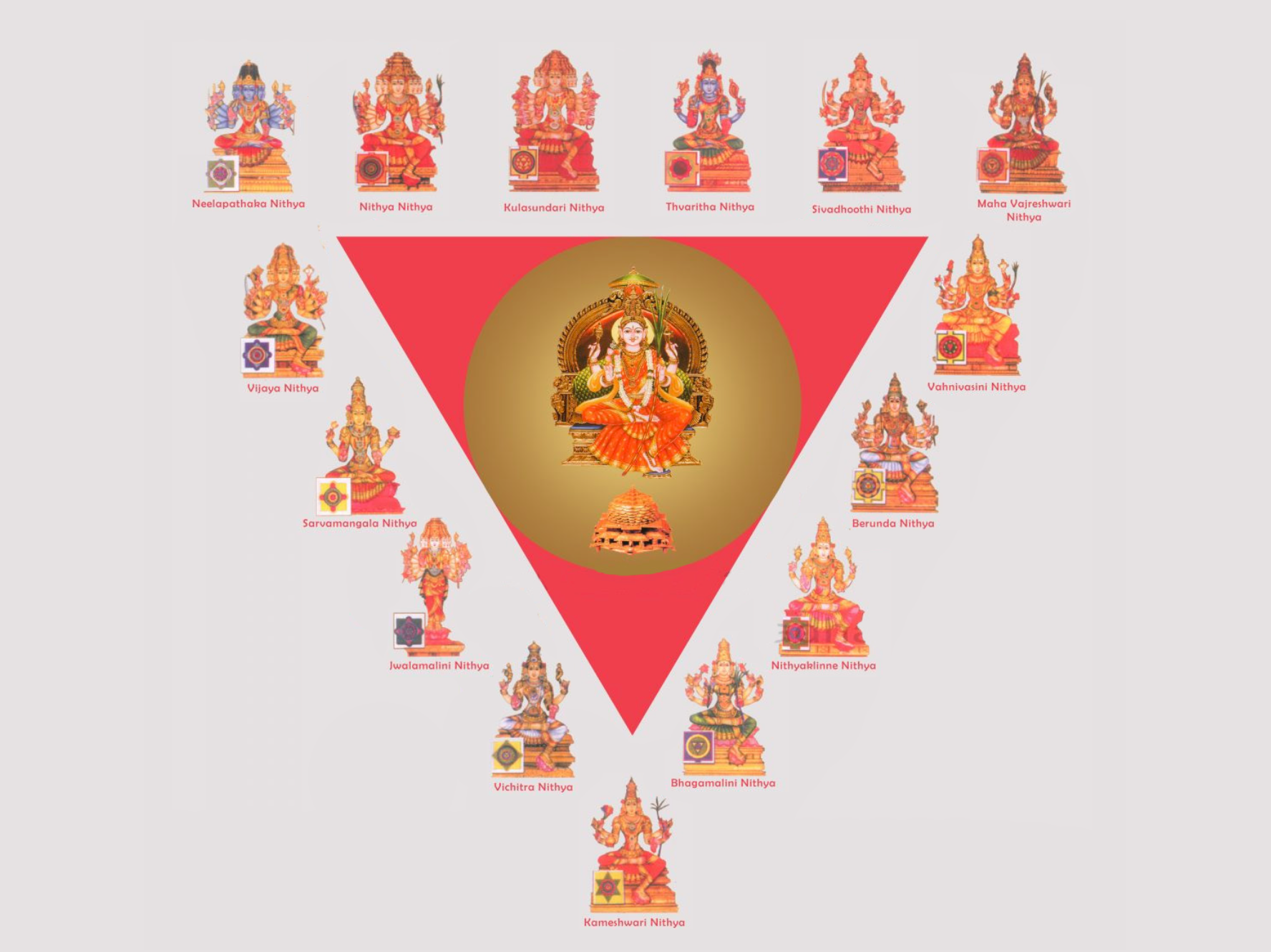- Edited

Just as a woman menstruates every 28th day, so does the cosmos have its own cycles and periods that are governed by the lunar calendar (the moon being the second-fastest moving object in Earth’s sky besides the sun). Sometimes we resonate with these cycles; at other times, we are tone-deaf to them. Sometimes we are sane; sometimes lunatic. The lunar clock is divided into 16 kalās (digits or phases of the moon).
In the Śrī Cakra Pūjā, we worship the 15 Nityā Devatās, five per side, around the central triangle, along with all the Sanskrit vowels. The 16th Nityā is worshiped in the center.
The Sanskrit word for time is kāla. The word nityā in Sanskrit means a unit of time. The nityās are the different phases of the moon (the tithīs) as well as the different aspects of space.
You begin by worshiping amāvasyā, the new moon, and continue on to the pūrṇimā, the full moon. If you worship them using the central triangle of Sri Chakra, you proceed in a counterclockwise direction. But if you perform worship to them in an image of the Devi, they are visualized as being arrayed around her neck, and you proceed in a clockwise direction. In Śrī Cakra Pūjā, worship is usually confined to reciting the mūla (root) mantra of each respective Nityā Devatā, but sometimes it is also accompanied by a short puja to each of them.
The Nityā Devatās are also identified with the 15-syllable Pañcadaśī Mantra, with each syllable of the same being recited on its associated day or nityā. Each syllable refers to the eternal, formless aspects of the cosmos (Shiva) or to the material universe and its maya (Shakti). It is considered appropriate to worship the Devi on the days associated with Shakti, and not on days associated with Shiva.
Source: "Gifts from the Goddess"

